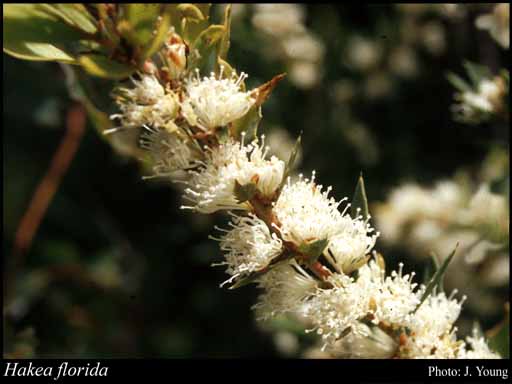- Reference
- Trans.Linn.Soc.London 10:183 (1810)
- Conservation Code
- Not threatened
- Naturalised Status
- Native to Western Australia
- Name Status
- Current
Erect, bushy shrub, 0.9-2.5 m high. Fl. white-cream, Oct to Dec or Jan. Sand, loam, clayey sand, gravel, laterite, granite. Hills.

Scientific Description
Shrubs, 1-3 m high; branchlets hairy. Leaves alternate, 15-70 mm long, 2-25 mm wide, glabrous; lamina flat, clearly widest above the middle or more or less the same width throughout, once divided, pinnately divided, shallowly divided. Inflorescences axillary, white; pedicels 3-5 mm long. Perianth 3-4 mm long, glabrous; ovary glabrous; pistil 4-5.5 mm long, pollen presenter conical, style glabrous. Follicles 24-40 mm long, 15-23 mm wide, corky tetrahedral projections (on external surfaces of fruit) absent; seed 16-20 mm long (including wing), 10-14 mm wide, the wing discontinuous, marginal, extending down one lateral side only. Flowers in November or December. Occurs in the South-west (SW) Botanical Province(s), in the Jarrah Forest (JF), Mallee (MAL), Warren (WAR) or Esperance Plains (ESP) IBRA subregion(s).
Distribution
- IBRA Regions
- Esperance Plains, Jarrah Forest, Mallee, Warren.
- IBRA Subregions
- Fitzgerald, Recherche, Southern Jarrah Forest, Warren, Western Mallee.
- IMCRA Regions
- WA South Coast.
- Local Government Areas (LGAs)
- Albany, Broomehill-Tambellup, Cranbrook, Denmark, Esperance, Gnowangerup, Jerramungup, Manjimup, Plantagenet, Ravensthorpe.